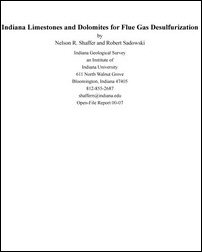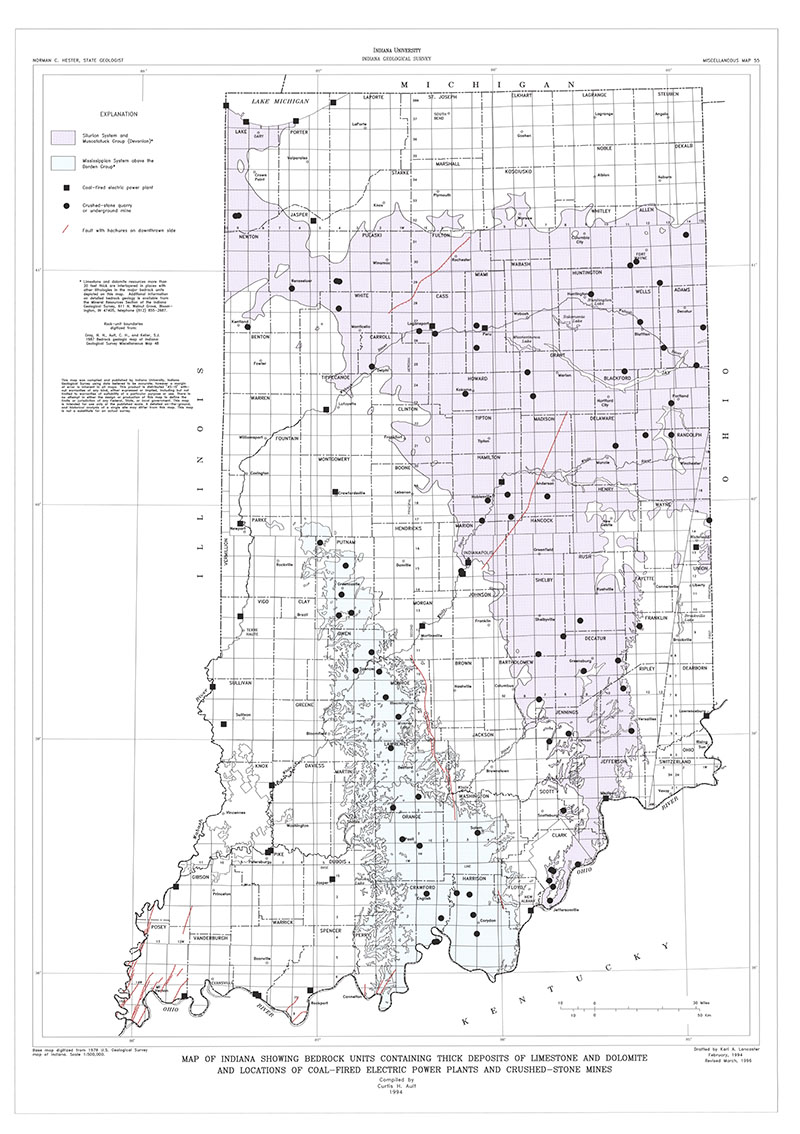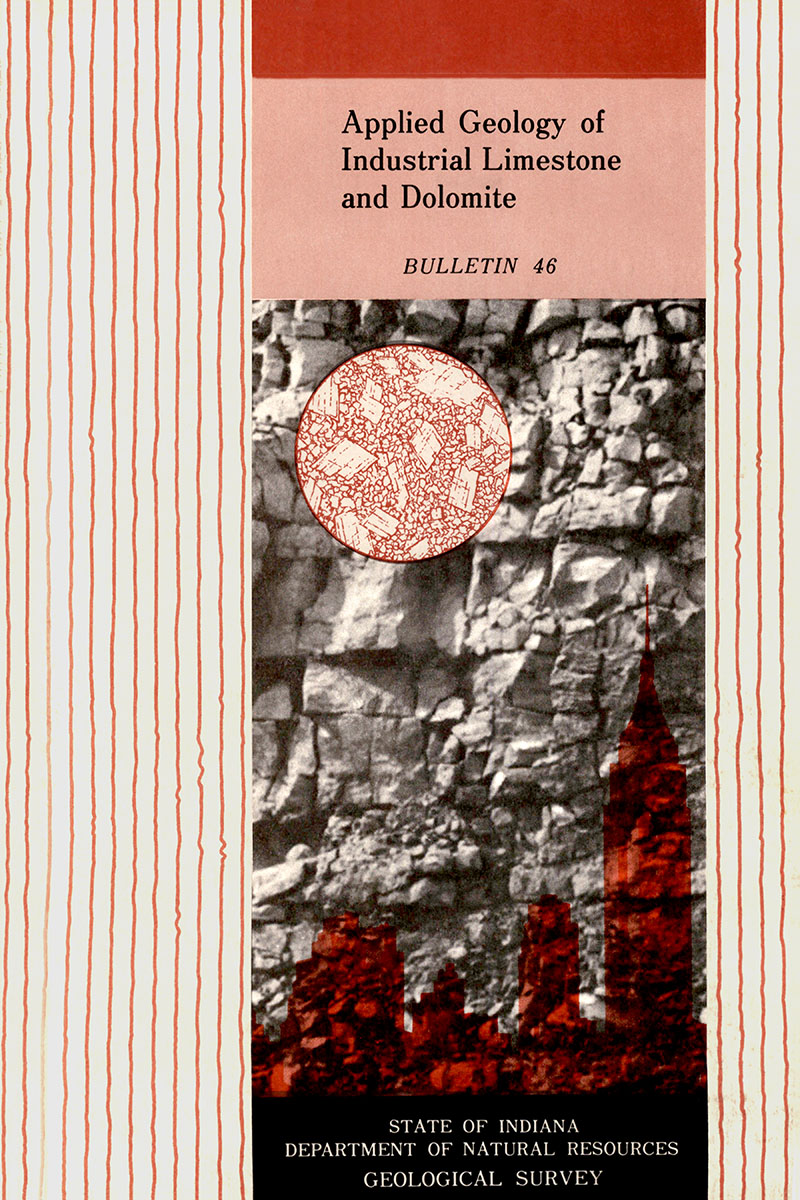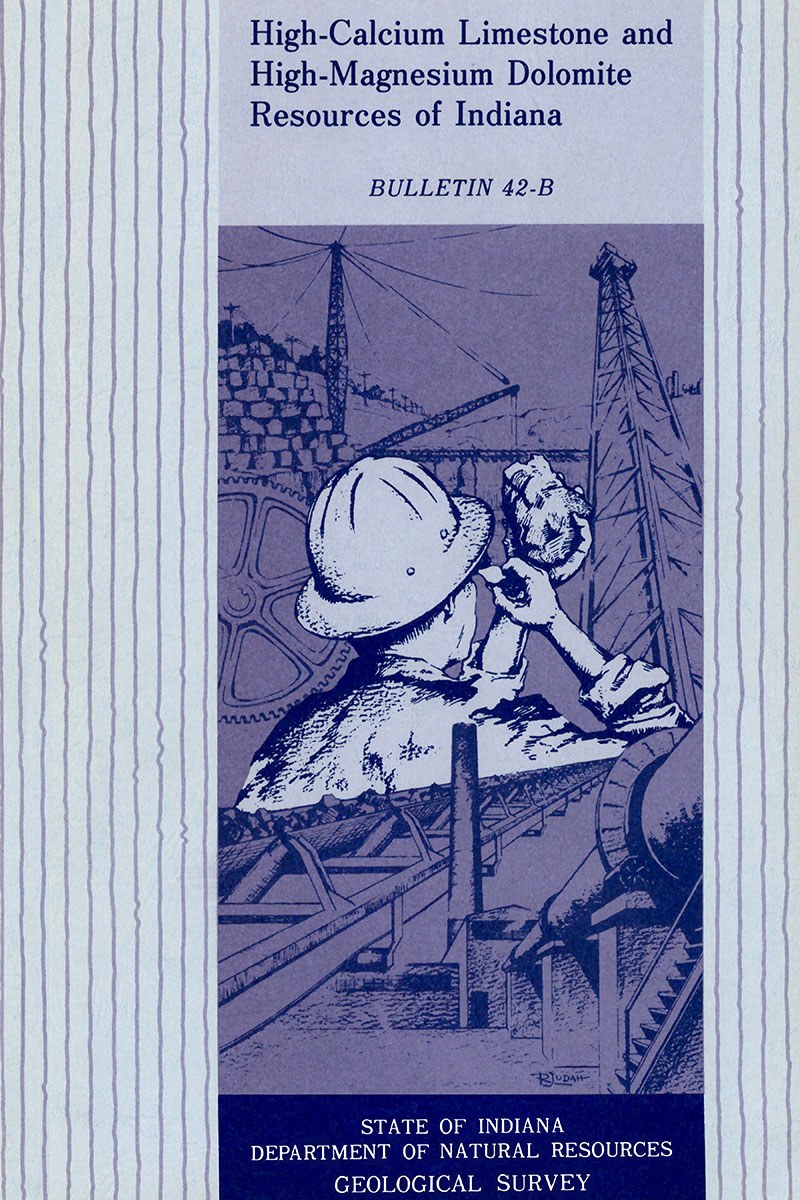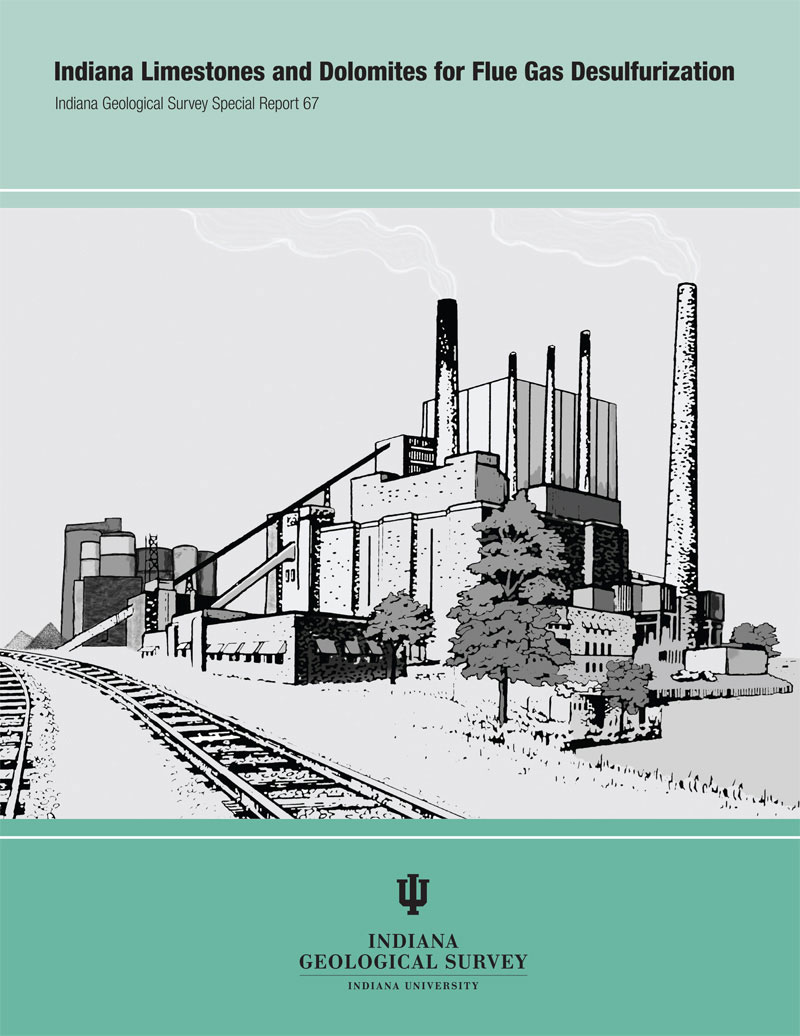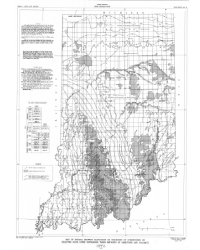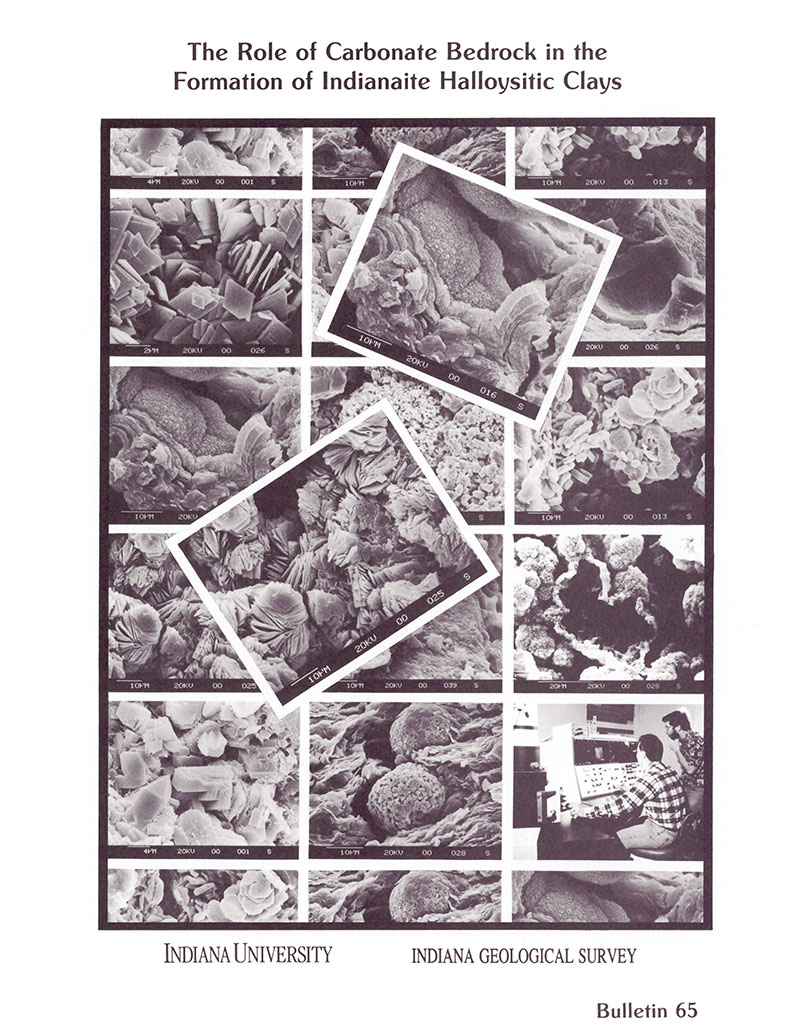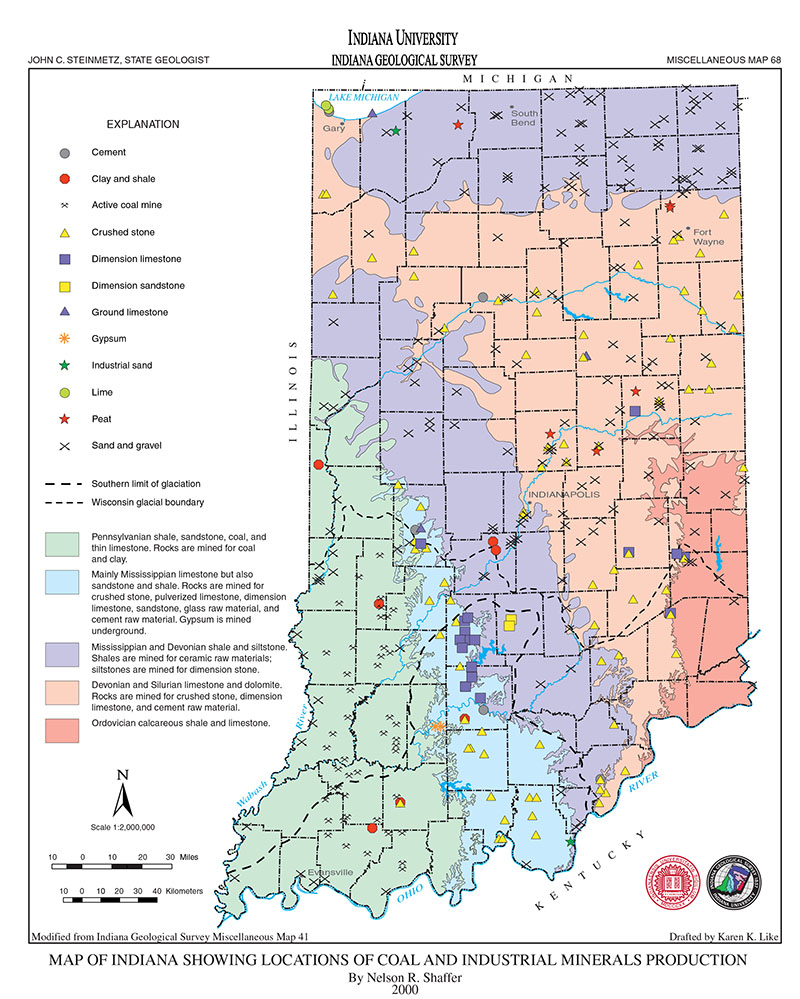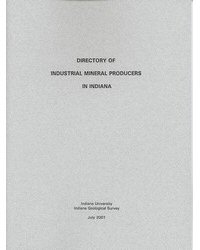ABSTRACT: Implementation of the Clean Air Act Amendments of 1990 has had a negative effect on the production of coal used for generating electric power in Indiana and elsewhere in the Midwest. Required reductions of sulfur compounds from gas streams, or flue-gas desulfurization (FGD), as mandated by these laws, have encouraged installation of wet limestone scrubbers at numerous generating plants. Increasingly stringent requirements beginning in the year 2000 are expected to necessitate even more extensive use of scrubber technology. Indiana has large deposits of limestone -- the major consumable alkaline raw material for scrubbers -- that can meet an expected demand of several million tons per year. Limestones are not, however, all the same and different limestone units behave quite differently when used as scrubbing agents under the conditions found in practice. Decisions about FGD scrubber stones would be more meaningful when made with thorough knowledge of which rock units contain the limestones most efficient to FGD process and which sites of suitable stone are located nearest to power plants. Even though abundant carbonate rocks occur in Indiana, their suitability in scrubbing systems has received little attention and few attempts have been made to match stone resources to the needs of various utility scrubbing systems. Optimization of the fit between geological characteristics of the existing limestones and prospective scrubber systems should allow for greatly improved planning and for the operation of FGD systems with attendant lower overall costs. Electric utilities have developed computer models to predict FGD system operations (e.g., the FGD-PRISM model of the Electric Power Research Institute). These models require geologic and geochemical data, such as reactivity, that are often unavailable from typical analyses. This study generated data needed for the model during a cooperative effort between Indiana Department of Commerce, the Indiana Geological Survey (IGS), the Indianapolis Power & Light Company (IP&L), and the Indiana Mineral Aggregates Association. The goal was to provide essential geologic details of Indiana scrubber stone raw materials and to apply these data to the FGD-PRISM model in order to provide general geological guidance and to determine which geologic units can provide stone for most efficient sulfur removal. Results of the model for selected limestones and for parameters specific to one IP&L generating plant were calculated. Geologic data generated may be applied to other generating operations and our examples should help any utilities to optimize their FGD strategies. Several hundred samples from more than 30 active quarries were collected and their physical properties determined. Grindability values ranged from 7.2 to 21.7 for 50 selected samples. Acid insoluble residues range from less than 1 percent to 55 percent. Dissolution rates, as an index of reactivity, varied over two orders of magnitude for the selected set of samples. These data, plus chemical analyses and calcium-to-magnesium ratios, were entered into a generic scrubber model to determine rates of stone use and scrubber efficiency for various stone. Removal of sulfur dioxide (SO2) was projected by this model to range from 89 percent to 98 percent with stone utilization rates from 91 percent to 93 percent. Excellent scrubber stone sources were found in Mississippian age rocks in central and southern Indiana. Rocks of the Paoli, Ste. Genevieve, and Salem Limestones were especially efficient, however, even small amounts of dolomite, clay minerals, and quartz diminished a stone’s usefulness for FGD scrubbing.
Shaffer, N. R., Sadowski, R. 2000, Proposal to determine the most efficient limestones and dolomites for flue gas desulfurization: Indiana Geological Survey Open-File Study 00-07, 153 p.
Notes: Publications in the Indiana Geological Survey Open-File series have been inconsistently named using a variety of series titles including "Open-File Report," "Open-File Map," and "Open-File Study." Prior to 1994, a publication in this series was generally referred to as an "Open-File Report" (but not always). To help reduce confusion created by these inconsistencies, the IGS now refers to every publication in the Open-File series as an "Open-File Study." To be entirely correct in writing a bibliographic reference for a publication, one should use the series name and number that appears on the publication itself.
1 appendix.
You may also like:
Keywords: industrial minerals, energy resources, limestone, dolomite, dolostone, sulfur
Can't find what you're looking for? Feel free to contact us directly:
Indiana Geological and Water Survey
1001 E. 10th St.
Bloomington, IN 47405
812-855-7636 (phone)
812-855-2862 (fax)
IGWSinfo@indiana.edu
IGS Return Policy
- Original sales receipt required.
- Returns accepted within 30 days of purchase date.
- Refund will be issued by the same method of payment as purchased.
- Products must be returned in the same new condition as purchased.
- Refunds on custom orders and digital products are NOT allowed.
- Customers are responsible for paying shipping costs to return products.
Updated 8/19/2020



